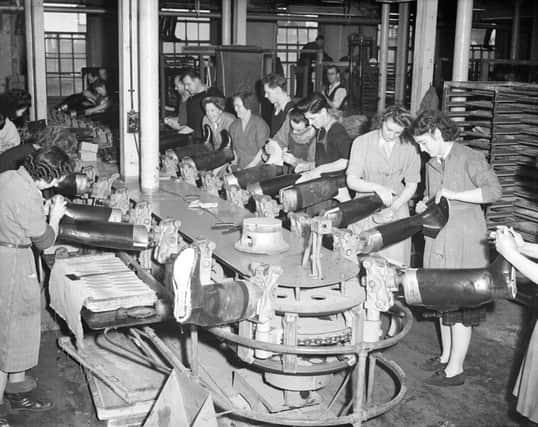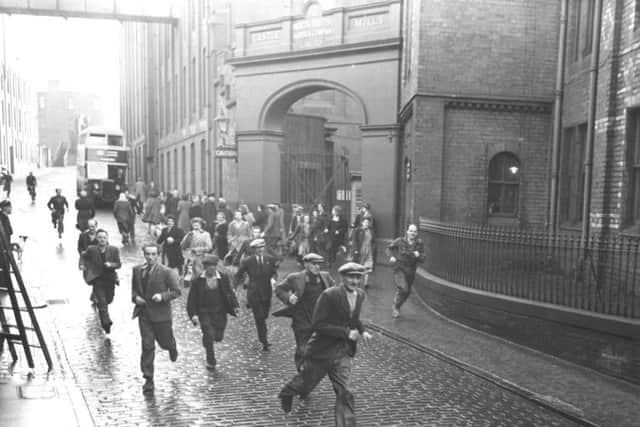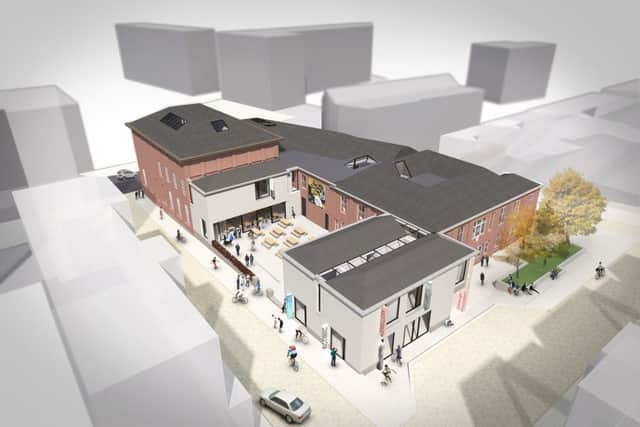Edinburgh rubber works set for £6.6m arts revamp


The former rubber works in Edinburgh will be turned into the capital’s newest arts centre after £6.6 million worth of funding was secured.
The Heritage Lottery Fund and Creative Scotland have given final backing to a bid to transform part of the North British Rubber Factory, where 8000 people were once employed.
Advertisement
Hide AdAdvertisement
Hide AdStaff worked day and night during the First World War to produce 1.2 million pairs of boots for the army that could keep rain and mud at bay.


Britain’s first traffic cones were created at the site - at one point the biggest factory in Edinburgh - in 1958 and its rubber tyres hastened the demise of the capital’s trams.
Hot water bottles, golf balls, hoses, rubber sheeting and equipment for heavy industry were all produced there before the company relocated to Newbridge, near Edinburgh Airport, in 1973.
The remaining “Castle Mill Works” building, which became offices after the factory site was taken over during the expansion of the brewing industry in Fountainbridge, is the last visible reminder of its industrial heritage.


The site, close to the birthplace of Sir Sean Connery, will now become home to a world-class printmaking facility, studios, exhibition spaces, a cafe-bar and retail units dedicated to the art and craft-makers.
Screenprinting, lithography, etching and 3D printing will all be created and showcased in the new complex, which Historic Scotland has already pledged £500,000 towards.
Edinburgh Printmakers chief executive Sarah Price said: “We can’t wait to get going on delivering artistic exhibitions and activities that will benefit local people and bring visitors to the area. Art has the power to transform lives and places, and that is our aim.”
Advertisement
Hide AdAdvertisement
Hide AdIain Munro, deputy chief executive of Creative Scotland, said: “Edinburgh Printmakers plays an important role in the infrastructure for contemporary art in Scotland.
“This new facility will enable the organisation to build on this reputation by creating a state-of-the art building which will be a more visible, accessible, facility appropriate to their needs and aspirations for the 21st century.”
Work will get underway next year on the derelict landmark, which was placed on Scotland’s “buildings at risk register” in 2010 - five years after the demise of the Fountain Brewery. Temporary artworks are planned during the building works to reflect its history.
The transformation will create a new home for the Edinburgh Printmakers organisation, which has been based in a cramped former washhouse off Leith Walk since 1987. It has been pursuing a rescue bid for the old rubber works building for the past three years.
The full £10 million project, hoped to be completed by 2018, will be part of a £120 million India Quay development on the banks of the Union Canal, which will also feature 300 new homes, a hotel, shops and restaurants.
The Castle Mill Works building had previously been earmarked for demolition until plans to create a new Bank of Scotland complex on the site, which were shelved after in the wake of the global financial crisis.
Dame Seona Reid, chair of the Heritage Lottery Fund’s committee for Scotland, said: “Not only will this provide a thriving cultural centre benefitting many hundreds of national and international artists but it will breathe life back into Fountainbridge.
“The community is justly proud of its industrial heritage so it is fitting that Castle Mill Works, which once supported so many families, will be the catalyst in its regeneration.”